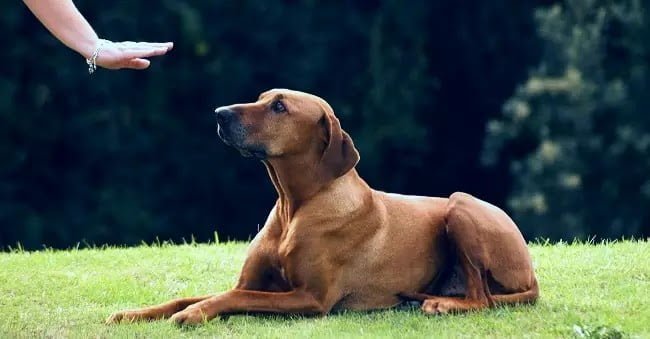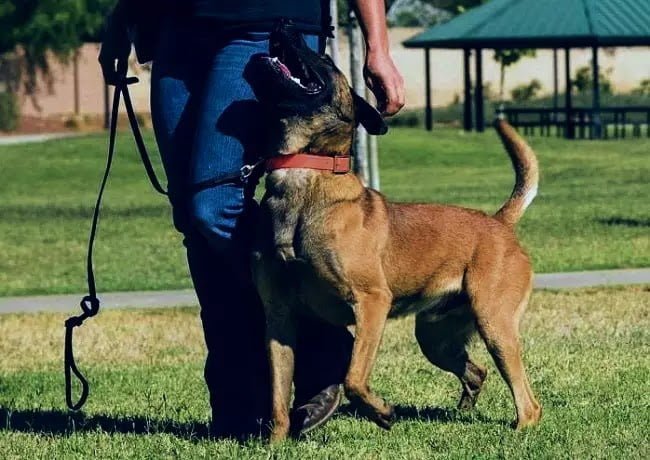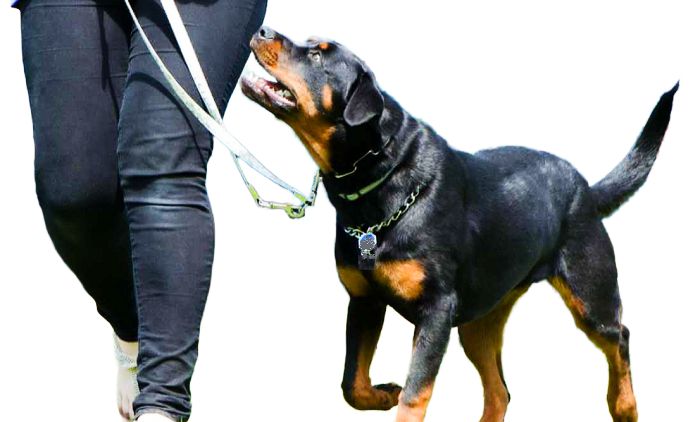Training your dog should be fun! A well-behaved dog makes it easier to protect him. If you allow your dog to run freely, he must return when called, otherwise he will typically flee the house as the door is opened. Your dog’s life might be saved if you can get him away from a moving vehicle or an angry animal.
Good-mannered dogs make excellent neighbors as well. You would prefer not to allow yours to express uncontrolled energy around a young child who is afraid of dogs or an elderly neighbor who is unsteady on her feet.
When to Start Training your Puppy
If your puppy is younger than 90 days old, you should start very light training right away. Start by teaching him family rules and potty habits, such as where he should nap, where he should sit during mealtimes, which rooms he is allowed in, whether he is allowed on the couch, etc.
A dog’s reaction time is long enough when he is three to four months old for him to start learning the basics of commands. Although it is possible to teach new habits when old ones are so established, it is typically simpler to demonstrate a new instruction than to erase a bad one. Training expresses specifically that you are the leader of the team. It’s a fantastic way to strengthen relationships as well.
Why Is Dog Training Important?
Dog training is crucial for a variety of reasons, including:

Encourages Positive Behavior
The most obvious benefit of training your dog is that you can encourage good behavior while discouraging bad behavior. Teaching your dog to sit, stay, and heel as well as how to avoid biting up your shoes and how to hold it till they’re outside are all part of training. Puppy and dog owners alike can benefit from training by learning to value their pets’ conversation.
Offers mental excitement
Dogs can become exhausted, just like people do, and when they do, they are unable to continue. Training your dog may be a fun mental activity that mimics recess for them, whether you’re teaching them basic commands like sit and stay or learning new tricks like how to play dead.
Builds Trust
When your dog successfully learns new command, it increases their love and trust for you, transforming them from the family pet to a committed and dependable partner. The best technique to develop a close bond with dogs is to practice commands with your dog.
You might be interested in acquiring some basic dog training if you have a dog or a puppy. An obedience trainer can teach your dog how to behave, or you can teach your dog how to behave on your own.
Dog training with an obedience trainer can change in cost and it ordinarily happens in a class. If you do the dog training yourself, it is generally free and you can do it from your own home. If you do decide to do the dog training yourself, it is ideal to get taught on dog training.
Positive Reinforcement Dog Training
Dog training using treats is a typical and tried-and-true method because most dogs are motivated by food. That being said, many dog owners would rather use rewards like praise, stroking, or toys to teach their dogs how to behave. It gets down to finding what works best for you and your dog because both are fascinating when done properly. Divide your training sessions into manageable lessons, focusing for about 10-15 minutes on a single command. This will let you keep up with your pet’s attention and care for practice session breaks. Training with positive reinforcement needs dedication and works best when used consistently.
If treats are used, be sure to choose a little, delicate treat that won’t crumble. Before she loses her senses, your dog must have the chance to quickly swallow it. Keep in mind that the amount of calories and fat your pet consumes should be considered. An excessive amount of treats, especially human food like cheddar or bread, might be harmful to a pet’s health.
Critical Tips for Training Your Dog
Your dog needs to learn 5 main commands through basic dog training. You’ll need some dog treats to start off with this training for dogs.
Sit

To prevent your dog from being distracted, conduct this dog training in a calm environment. As you hold the dog treat simply over their heads, tell your dog to sit many times. In this manner, the dog must look up and may sit independently to reach the treat.
If not, gently lower them if necessary. Praise them and offer your dog a treat when they finally sit. This type of dog training relies on the theory that the dog will learn to associate the command with sitting and receiving praise as a result of hearing “sit” repeatedly.
Stay

Put your dog in the sit position to start. Keep your position in front of him and command with an open palm as you say “Stay” as well as his name. Keep eye contact and let him remain in the stay posture for 30 seconds before releasing him by saying, “Okay.” As you practice, have him stay for longer lengths of time while you stand farther away.
Tell the dog “no” and begin again if it stands up. Training a dog takes some time. Someone may need to sit with the dog to help support it during the first few times of staying.
Come

Walk a short distance away from the dog on the long lead while it is in the Sit and Stay position. “Come,” they command. Say “come” with a smile on your face and pat your knee.
If your dog is afraid to approach you while you are standing, try getting down on their level to increase their comfort. Return to standing during work after they are more at ease following the command.
Give your dog a treat and some praise when he approaches you.
You should start practicing off-leash in a fenced-in area as your dog gets better. Return to using the long lead if your dog won’t come off-rope until he responds appropriately and consistently to the instruction to come.
This is a crucial command for any dog owner, but it’s especially important for those who want to work with their dogs off-leash. Avoid rushing into off-leash situations before the command is thoroughly understood and your dog responds consistently since doing so could put your dog or others in danger.
Leave It or No

You might not want your dog to eat things that are unnecessary for him to process. This is the reason for the effectiveness of a “No” or “Leave It” command. Treats should first be held between two hands. To get your dogs to lick or sniff at the treat, steadily advance the treat toward their faces. At that time, instruct them to “leave it” or “no.” Don’t give your dog the primary treat if they are attempting to steal it out of your hand. When your dog decides they are no longer interested in the first treat, give them the second treat from the opposite hand. This action indicates that they behaved properly. Make it a point to train the activity until your dog is an expert.
Heel

Holding the dog’s rope in your right hand, begin this command. Your dog should stay on your left side. Holding the treat in your left hand, you can use it to lead your dog as they are walking or being taught to sit. Give the command “heel”. Take a few steps while directing the dog that is standing next to you. Give this guy a treat or compliments from your dog.
Bottom Line
Using these commands, your dog should be perfect thus far. It’s crucial to start practicing these commands right away so that you and your child are prepared for a sustained period of affection. Your dog’s mental health and socialization skills will benefit from this.
We generally need to have pleasant relationship with our canine companions any place we go. Train your dog these basic commands to resolve any behavioral issues and make a healthy and happy companion.
Since kids can’t understand what you’re saying but you can always demonstrate what you want them to do, be tough but silent and make sure you’re not venting your frustration on them.








